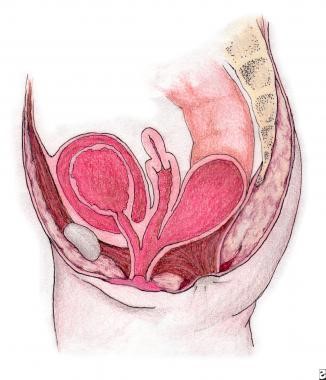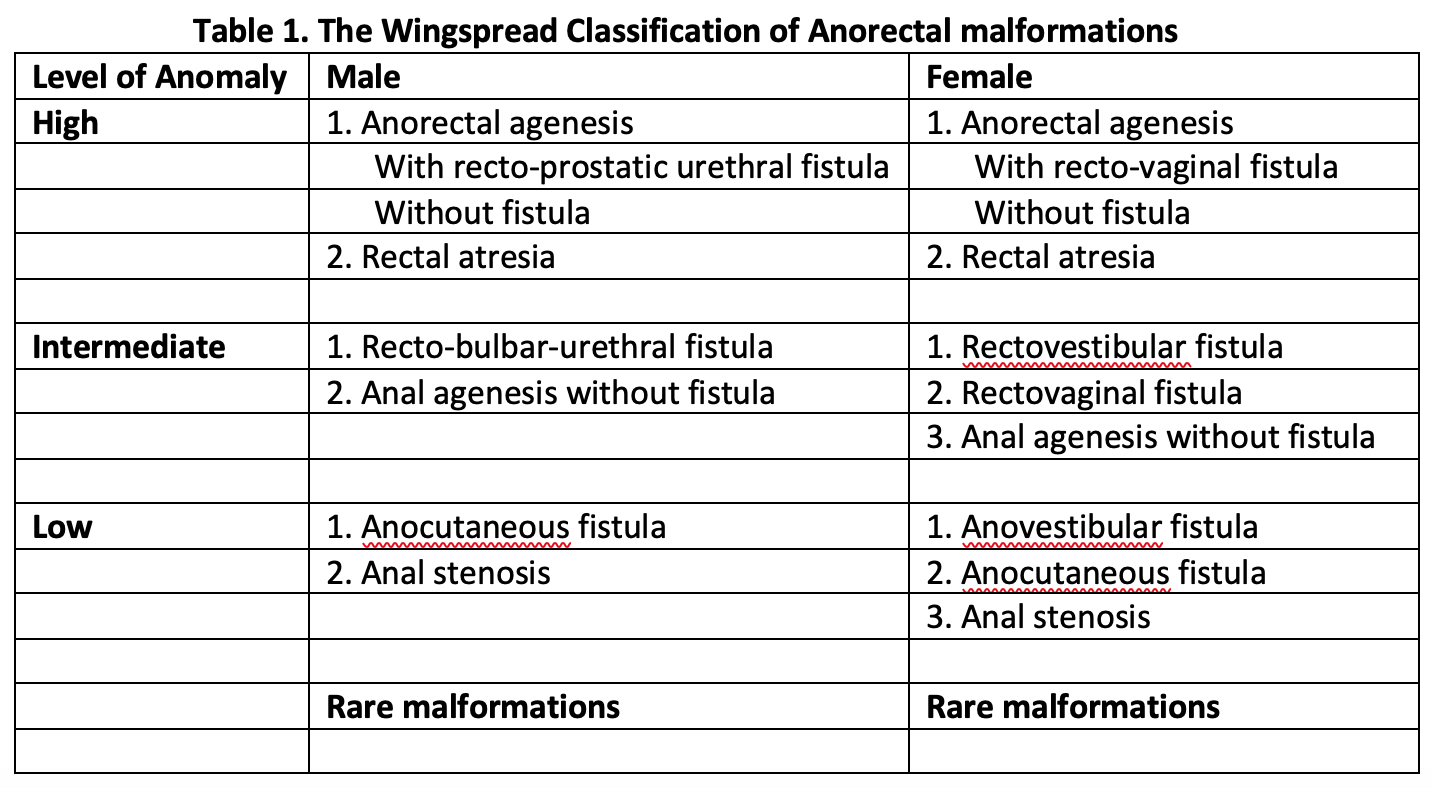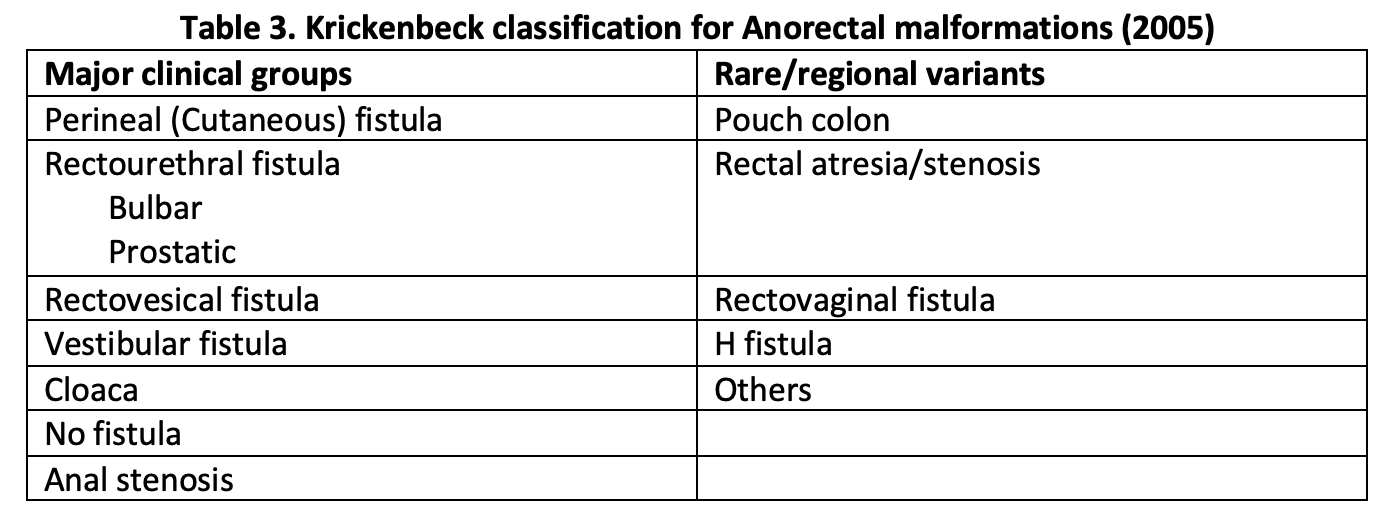[1]
Levitt MA, Peña A. Cloacal malformations: lessons learned from 490 cases. Seminars in pediatric surgery. 2010 May:19(2):128-38. doi: 10.1053/j.sempedsurg.2009.11.012. Epub
[PubMed PMID: 20307849]
Level 3 (low-level) evidence
[2]
Warne S, Chitty LS, Wilcox DT. Prenatal diagnosis of cloacal anomalies. BJU international. 2002 Jan:89(1):78-81
[PubMed PMID: 11849166]
[3]
Kruepunga N, Hikspoors JPJM, Mekonen HK, Mommen GMC, Meemon K, Weerachatyanukul W, Asuvapongpatana S, Eleonore Köhler S, Lamers WH. The development of the cloaca in the human embryo. Journal of anatomy. 2018 Dec:233(6):724-739. doi: 10.1111/joa.12882. Epub 2018 Oct 7
[PubMed PMID: 30294789]
[4]
Minneci PC,Kabre RS,Mak GZ,Halleran DR,Cooper JN,Afrazi A,Calkins CM,Downard CD,Ehrlich P,Fraser J,Gadepalli SK,Helmrath MA,Kohler JE,Landisch R,Landman MP,Lee C,Leys CM,Lodwick DL,Mon R,McClure B,Rymeski B,Saito JM,Sato TT,St Peter SD,Wood R,Levitt MA,Deans KJ,Midwest Pediatric Surgery Consortium., Screening practices and associated anomalies in infants with anorectal malformations: Results from the Midwest Pediatric Surgery Consortium. Journal of pediatric surgery. 2018 Jun
[PubMed PMID: 29602552]
[5]
VanderBrink BA, Reddy PP. Early urologic considerations in patients with persistent cloaca. Seminars in pediatric surgery. 2016 Apr:25(2):82-9. doi: 10.1053/j.sempedsurg.2015.11.005. Epub 2015 Nov 10
[PubMed PMID: 26969231]
[6]
Goossens WJ, de Blaauw I, Wijnen MH, de Gier RP, Kortmann B, Feitz WF. Urological anomalies in anorectal malformations in The Netherlands: effects of screening all patients on long-term outcome. Pediatric surgery international. 2011 Oct:27(10):1091-7. doi: 10.1007/s00383-011-2959-4. Epub
[PubMed PMID: 21805172]
[7]
Warne SA, Wilcox DT, Ledermann SE, Ransley PG. Renal outcome in patients with cloaca. The Journal of urology. 2002 Jun:167(6):2548-51; discussion 2551
[PubMed PMID: 11992086]
[8]
Levitt MA, Patel M, Rodriguez G, Gaylin DS, Pena A. The tethered spinal cord in patients with anorectal malformations. Journal of pediatric surgery. 1997 Mar:32(3):462-8
[PubMed PMID: 9094019]
[9]
Torre M, Martucciello G, Jasonni V. Sacral development in anorectal malformations and in normal population. Pediatric radiology. 2001 Dec:31(12):858-62
[PubMed PMID: 11727021]
[10]
Wood RJ, Reck-Burneo CA, Dajusta D, Ching C, Jayanthi R, Bates DG, Fuchs ME, McCracken K, Hewitt G, Levitt MA. Cloaca reconstruction: a new algorithm which considers the role of urethral length in determining surgical planning. Journal of pediatric surgery. 2017 Oct 12:():. pii: S0022-3468(17)30644-9. doi: 10.1016/j.jpedsurg.2017.10.022. Epub 2017 Oct 12
[PubMed PMID: 29132797]
[11]
Gasior AC, Reck C, Lane V, Wood RJ, Patterson J, Strouse R, Lin S, Cooper J, Gregory Bates D, Levitt MA. Transcending Dimensions: a Comparative Analysis of Cloaca Imaging in Advancing the Surgeon's Understanding of Complex Anatomy. Journal of digital imaging. 2019 Oct:32(5):761-765. doi: 10.1007/s10278-018-0139-y. Epub
[PubMed PMID: 30350007]
Level 2 (mid-level) evidence
[12]
Jarboe MD, Teitelbaum DH, Dillman JR. Combined 3D rotational fluoroscopic-MRI cloacagram procedure defines luminal and extraluminal pelvic anatomy prior to surgical reconstruction of cloacal and other complex pelvic malformations. Pediatric surgery international. 2012 Aug:28(8):757-63. doi: 10.1007/s00383-012-3122-6. Epub
[PubMed PMID: 22810369]
[13]
Braga LH, Lorenzo AJ, Dave S, Del-Valle MH, Khoury AE, Pippi-Salle JL. Long-term renal function and continence status in patients with cloacal malformation. Canadian Urological Association journal = Journal de l'Association des urologues du Canada. 2007 Nov:1(4):371-6
[PubMed PMID: 18542820]
[14]
Caldwell BT, Wilcox DT. Long-term urological outcomes in cloacal anomalies. Seminars in pediatric surgery. 2016 Apr:25(2):108-11. doi: 10.1053/j.sempedsurg.2015.11.010. Epub 2015 Nov 10
[PubMed PMID: 26969235]
[15]
Peña A, Devries PA. Posterior sagittal anorectoplasty: important technical considerations and new applications. Journal of pediatric surgery. 1982 Dec:17(6):796-811
[PubMed PMID: 6761417]
[16]
Peña A. Total urogenital mobilization--an easier way to repair cloacas. Journal of pediatric surgery. 1997 Feb:32(2):263-7; discussion 267-8
[PubMed PMID: 9044134]
[17]
Halleran DR, Thompson B, Fuchs M, Vilanova-Sanchez A, Rentea RM, Bates DG, McCracken K, Hewitt G, Ching C, DaJusta D, Levitt MA, Wood RJ. Urethral length in female infants and its relevance in the repair of cloaca. Journal of pediatric surgery. 2019 Feb:54(2):303-306. doi: 10.1016/j.jpedsurg.2018.10.094. Epub 2018 Nov 7
[PubMed PMID: 30503195]
[18]
Peña A, Levitt MA, Hong A, Midulla P. Surgical management of cloacal malformations: a review of 339 patients. Journal of pediatric surgery. 2004 Mar:39(3):470-9; discussion 470-9
[PubMed PMID: 15017572]
[19]
Halleran DR, Wood RJ, Vilanova-Sanchez A, Rentea RM, Brown C, Fuchs M, Jayanthi VR, Ching C, Ahmad H, Gasior AC, Michalsky MP, Levitt MA, DaJusta D. Simultaneous Robotic-Assisted Laparoscopy for Bladder and Bowel Reconstruction. Journal of laparoendoscopic & advanced surgical techniques. Part A. 2018 Dec:28(12):1513-1516. doi: 10.1089/lap.2018.0190. Epub 2018 Jun 20
[PubMed PMID: 29924670]
[20]
Vilanova-Sanchez A, McCracken K, Halleran DR, Wood RJ, Reck-Burneo CA, Levitt MA, Hewitt G. Obstetrical Outcomes in Adult Patients Born with Complex Anorectal Malformations and Cloacal Anomalies: A Literature Review. Journal of pediatric and adolescent gynecology. 2019 Feb:32(1):7-14. doi: 10.1016/j.jpag.2018.10.002. Epub 2018 Oct 24
[PubMed PMID: 30367985]
[21]
Vilanova-Sánchez A, Reck CA, Wood RJ, Garcia Mauriño C, Gasior AC, Dyckes RE, McCracken K, Weaver L, Halleran DR, Diefenbach K, Minzler D, Rentea RM, Ching CB, Jayanthi VR, Fuchs M, Dajusta D, Hewitt GD, Levitt MA. Impact on Patient Care of a Multidisciplinary Center Specializing in Colorectal and Pelvic Reconstruction. Frontiers in surgery. 2018:5():68. doi: 10.3389/fsurg.2018.00068. Epub 2018 Nov 19
[PubMed PMID: 30510931]



